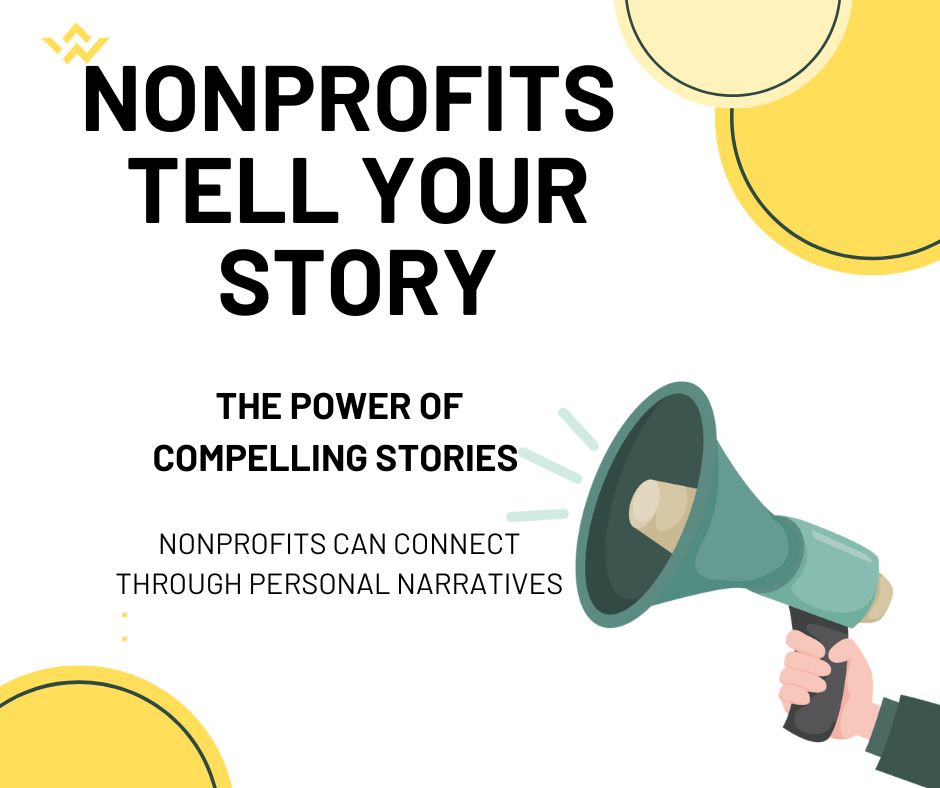
The Power of Compelling Stories: How Nonprofits Connect Through Personal Narratives
In a world filled with constant noise and information, it’s easy to forget what truly binds us together: stories. Humans have always been storytellers. From the earliest cave paintings to the digital age, sharing experiences, struggles, and triumphs has been the cornerstone of communication.
For nonprofits, compelling stories are more than just a way to engage supporters—they’re a bridge between a cause and the hearts of the people who can make a difference. By sharing personal, real-life stories of the individuals and communities your nonprofit is impacting, you not only inform, but also inspire action. Here’s why storytelling is such a powerful tool for nonprofits:
Numbers and statistics are important, but they don’t capture the humanity of the issue. A story, on the other hand, puts a face to the cause. When people hear about the struggles or successes of individuals, they connect on an emotional level. Take, for example, a nonprofit focused on hunger relief. Sharing a story about a family that received food assistance—and how that changed their future—creates a vivid image that resonates far more than saying “1 in 6 people struggle with hunger.”
By giving a human face to the issue, you show your supporters exactly who they are helping and why their contribution matters. This helps transform abstract ideas into something personal and relatable.
Emotions drive action. When someone is emotionally moved, they are more likely to respond. A well-told story has the ability to trigger empathy, whether it’s joy, sadness, hope, or even frustration. Through compelling narratives, you can evoke a range of emotions that motivate people to take action.
For instance, a story about a child overcoming illness with the help of your nonprofit might inspire a donor to give, a volunteer to get involved, or a community member to advocate for your cause. The emotion people feel in these moments creates lasting memories and a sense of responsibility.
Stories are a powerful way to build a community around your cause. When people hear about others who share similar struggles or experiences, they feel less alone. Whether your nonprofit supports victims of domestic violence, advocates for environmental protection, or works with underserved populations, the stories you share can foster solidarity and a collective sense of purpose.
When individuals or groups see their experiences reflected in your stories, they feel empowered. They begin to see your nonprofit not just as a charity, but as a movement they can be part of—one that is actively changing lives.
One of the most powerful things about storytelling is that it highlights not only the challenges but also the victories. By sharing how your nonprofit has made a real impact on individuals or communities, you can demonstrate the effectiveness of your work.
For example, showcasing the transformation of a family who received housing assistance and now has stable employment paints a picture of success. It’s a powerful reminder to your supporters that their contributions are making a tangible difference.
People love to share meaningful content. When a story resonates, it has the potential to go viral—on social media, in newsletters, or through word of mouth. By sharing real-life, compelling stories, you expand your nonprofit’s reach to people who may not have heard about your cause otherwise.
Social media platforms make it easier than ever for supporters to share stories and amplify your message, which can lead to greater exposure and new supporters. People are more likely to support a cause when they feel connected to the story and believe it aligns with their own values.
Ultimately, stories can serve as a call to action. They show how your nonprofit is solving problems, but they also highlight the ongoing need for support. A powerful story about someone whose life was changed by your nonprofit can encourage others to donate, volunteer, or advocate for your mission.
By ending stories with a specific call to action, you encourage your audience to take the next step. Whether it’s a donation request, a call for volunteers, or a plea to share the story with others, compelling stories can help propel your mission forward.
Be authentic: The best stories come from real, lived experiences. Share the highs and the lows to create an honest narrative.
Focus on the people: Your story should center on the people your nonprofit serves. Use names, faces, and voices to make the story more personal.
Show the impact: Don’t just focus on the problem—share how your nonprofit is solving it, and highlight the positive changes made.
Be concise: Keep the story focused and direct. The most compelling stories are often the ones that don’t over-explain but leave room for the audience to feel and think.
Use visuals: A powerful image or video can enhance a story. Whether it’s a photo of someone benefiting from your work or a behind-the-scenes look at your team in action, visuals can make your story more engaging.
Compelling stories are more than just a tool for engaging supporters—they are a way to build deep, lasting connections with your audience. Through storytelling, your nonprofit can highlight the struggles, triumphs, and transformations of the people you serve, and inspire others to join your mission. By sharing these personal, real-life stories, you help others see the heart of your cause and make the world a better place, one story at a time.
Copyright © 2025 . All Rights Reserved.
Privacy & Cookie Policy
